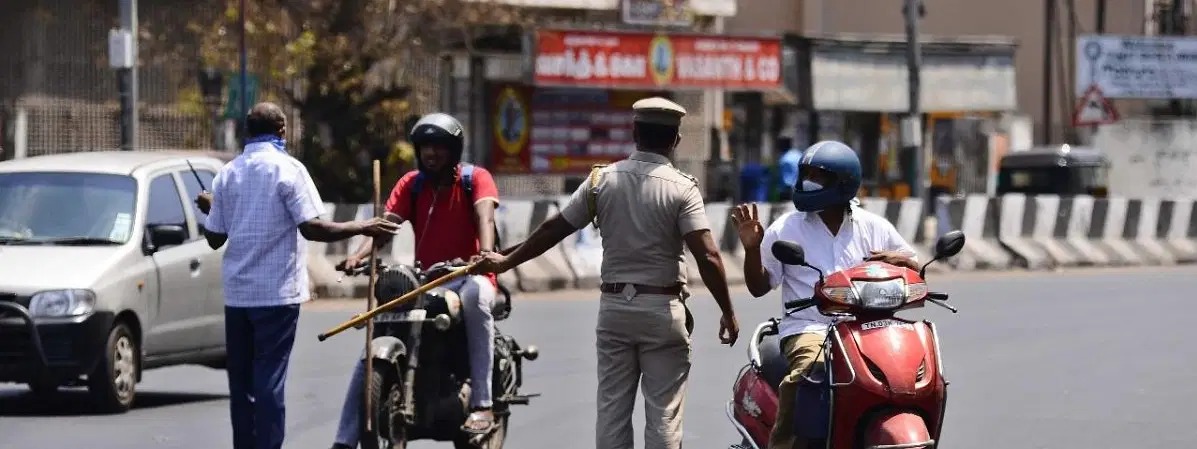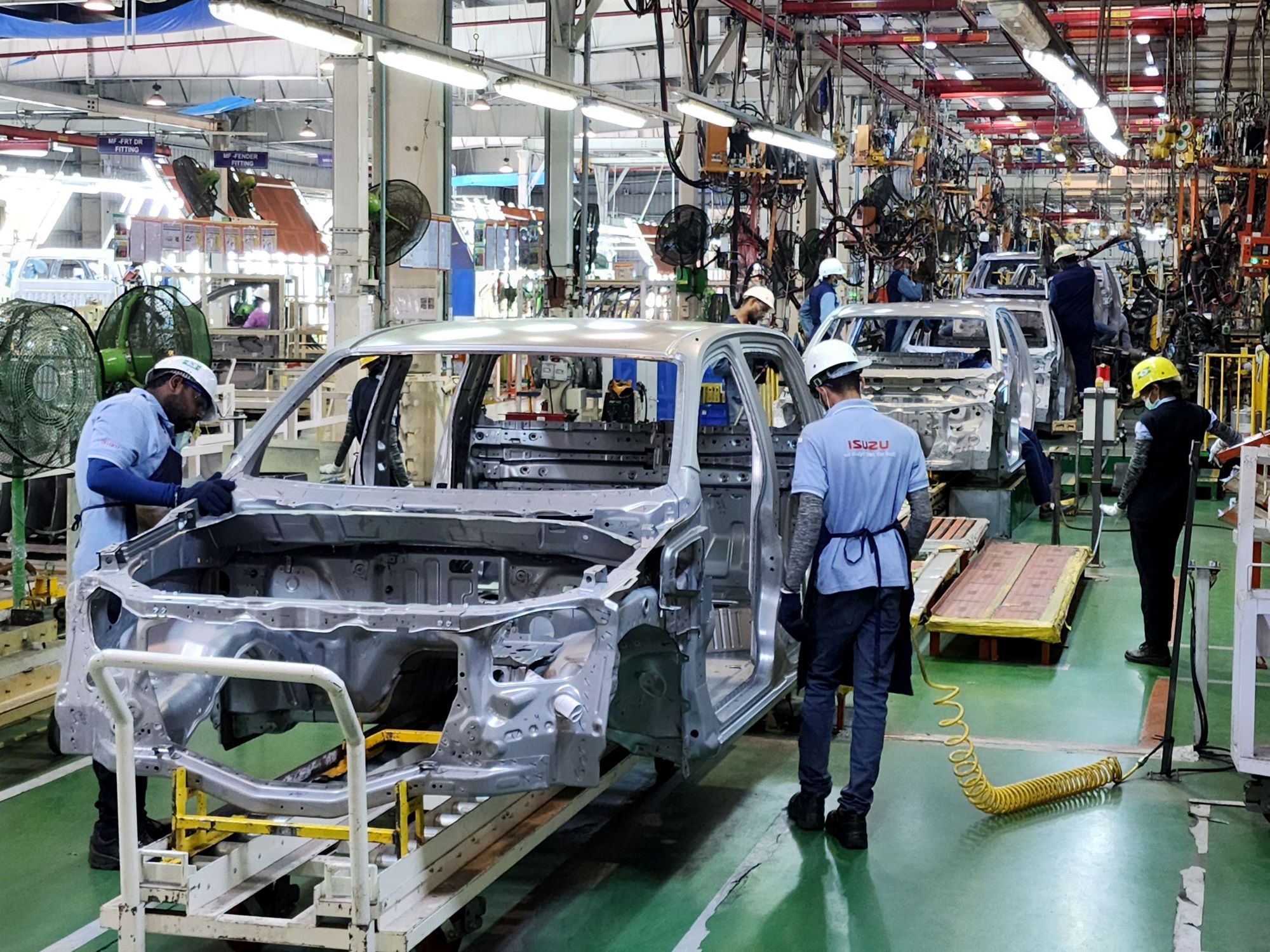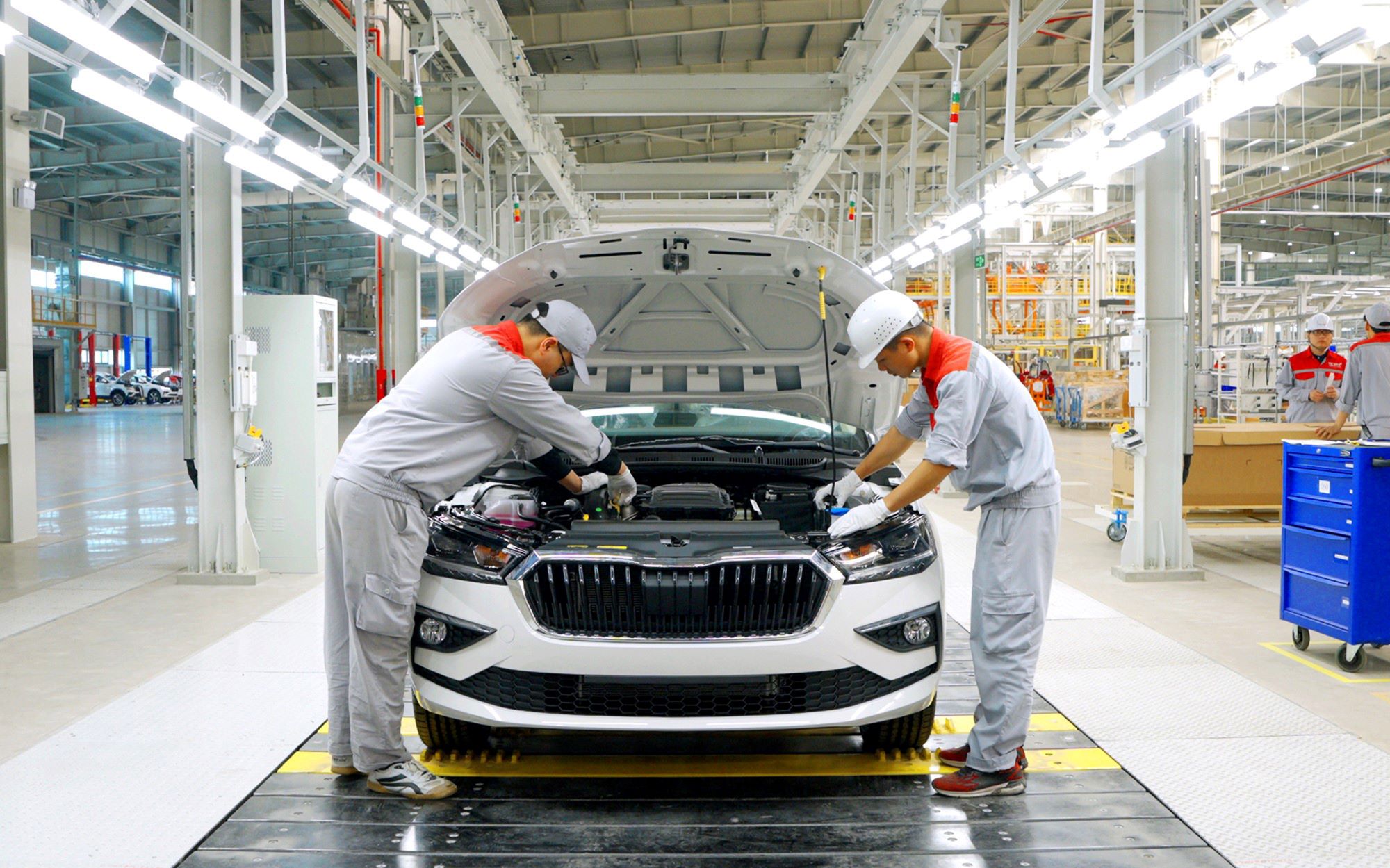Trending Now
- “If Edappadi Palaniswami permits, a thousand young members from the Virudhunagar district AIADMK are prepared to take up arms and engage in battle under my command.” – Former AIADMK Minister Rajendra Balaji
- “India is ready to deal with any counter-attack by Pakistan” – Wing Commander Vyomika Singh
- Central govt orders extension of CBI Director Praveen Sood’s tenure for another year
Tamilnadu News
Why Chennai’s COVID-19 Cases Are Sky High
![]() June 16, 2020
June 16, 2020
Anxiety is rising in Chennai every day as the numbers of COVID-19 cases rise. The total number of positive cases in Tamil Nadu as on June 15 is 46,504.
Of this, Chennai has the largest chunk of cases – 33,244. A total of 479 deaths related to the virus has also been reported as on June 15.
The chief minister on Monday announced an intense lockdown from June 19 to June 30 in four districts – Chennai, Chengalpet, Kanchipuram and Tiruvallur – in an effort to bring down the increasing cases in these districts.
But the question on every Chennaiite’s lips today – what is going on? Why are the cases climbing every day? When will this end?
The Lede spoke with bureaucrats and experts handling the pandemic containment measures to find out the answers to the questions above.
The continuous rise in the number of cases of COVID-19 can be attributed to a number of factors.
1. Congested unplanned living areas with high population density which makes spread easier and faster.
2. The casual attitude of a majority of Chennai residents towards wearing masks, washing hands and maintaining physical distancing.
3. The unknown nature of the virus and the evolving thought processes worldwide on how to contain spread and treat the infection.
High Population Density: The Six Red Zones
There are six zones within Chennai from where around 80% of the positive cases are being reported. Royapuram, Tondiarpet, Thiru Vi Ka Nagar, Anna Nagar, Kodambakkam and Teynampet are Chennai’s hotspots.
“Epidemiologists have clearly said that if we have to get over this, it is by continuous testing, getting people in congested areas out and ensuring that their high risk contacts are tested. There is no shortcut, according to them,” said Health Secretary J Radhakrishnan in a phone interview to The Lede.
Tamil Nadu is conducting the maximum number of tests for COVID-19 in the country. As on June 15, the number of tests conducted stands at close to 7.3 lakh. Compare this to Maharashtra which has more than double the number of positive cases (around 1.1 lakh) as Tamil Nadu and yet has conducted less than seven lakh tests so far.
“When we test so much (in these red zones), in Royapuram, Tondiarpet, Thiru Vi Ka Nagar, Anna Nagar, Kodambakkam and Teynampet – almost 80% of the daily cases (in Chennai) are from these areas. The disease has a doubling time and internationally there is a pattern. We are working in a focussed manner in Tamil Nadu. We have gone to the street level in these six areas and found that all these cases so far found are surprisingly in 6900 of the 40,000 streets in the 200 wards. These areas are a challenge for us,” said Radhakrishnan.
What Radhakrishnan means is that the congested living quarters, especially those of the middle and lower income groups, has contributed to wider spread of the disease as physical distancing is more often than not, impossible.
His claim is backed up by an almost decade-old paper called Slums in Chennai: A profile, published in York University by Dr C Chandramouli, IAS officer and then Director of Census Operations in Tamil Nadu. This paper was published just after the conclusion of the 2011 Census of India.
According to the paper, the total slum population of Tamil Nadu is around 28 lakh and forms 20% of the towns in which they are situated in.
“The largest slum population is found in the Chennai Corporation where 10,79,414 persons are reported as slum dwellers. This forms 25.6% of the total population,” states the report.
Houses in these areas – and this is easily seen when one visits the current red zones – are largely semi-permanent and temporary structures. 64% of the houses are of a permanent nature in slum areas. Contrast this with non-slum areas where 91% residences are permanent in nature.
The study also discusses the availability of living space – a crucial parameter at present for physical distancing to stop the spread of the virus.
“67% of the households in slums live in one-room tenements. Only 2% of the households in slums have more than 3 rooms. The cramped accommodation has its natural impact on health and hygiene. The spread of diseases is facilitated by such living conditions,” finds the study.
Other problems in slums include access to drinking water, with 55% of slum dwellers having access to drinking water within 500 metres of their homes and 19% of slum dwellers having to travel more than 500 metres to get drinking water.
More than a third of homes in slums did not have toilets. As a result, open defaecation has led to a host of diseases and poor immunity to beat the virus. 30% of slum households have no drainage facilities either, worsening the health hazard.
With a little more than a quarter of Chennai’s population living in slums, this is a large population disadvantaged to tackle the virus and beat it.
Interestingly, in the more organised Slum Welfare Board housing in places like Kannagi Nagar, authorities say it has been easier to contain the virus. This is because the residences are better planned and more space is available for slum dwellers.
“Our real problem is very high population density in six zones. In the urban slums which are planned, in Kannagi Nagar and Sholinganallur, the infection has been much easier to contain,” said Radhakrishnan.
Testing & What It Means
As already mentioned earlier in this report, Tamil Nadu is conducting the maximum number of tests as compared to anywhere else in India.
“A few weeks back there were allegations levelled at us that we are not showing the right numbers,” said Health Secretary Radhakrishnan. “Today we are being asked why the numbers are so high. It is a chicken and egg situation.”
Radhakrishnan explained that testing was being done strategically with a focus on the high-risk patients in containment areas. This is apart from those who walk in to hospitals to get themselves tested.
And due to focussed testing, the state is able to find and treat those who are infected, said Radhakrishnan.
“Within the testing, we have prioritised as well. There is a charge levelled at us that 50% of those tested are positive. If I test 2000 unconnected people randomly, my positive cases will be down. Now since we have organised fever camps, respiratory camps, we will definitely see more numbers. Organically it will go up and start coming down. Epidemiologists are of the view that tests should be increased even further,” he added.
While states like Delhi are refusing to test asymptomatic cases as a matter of policy, Tamil Nadu is testing everyone, including asymptomatic patients, at least as a matter of policy.
Why Chennaiites Need To Chip In
As per the state’s data, around 15-20% of Chennai’s residents are not wearing masks. Many of those that do, usually wear the mask just under the nostrils. This defeats the very purpose of masking which is to prevent the spread of the virus through droplets released when one sneezes or coughs.
Authorities across the board complain that people are “not cooperating” in terms of following the rules. Despite punitive measures – fines by police for not wearing masks, the threat of booking of cases under the Epidemic Diseases Act for crowding – Chennaiites appear to be laissez-faire about the virus.
This is also showing in the pattern of infection in the city.
“If you see, there are positive cases in Brindavan street (T Nagar) and KK Salai in MGR Nagar. But on the opposite streets there is not a single case,” explained Radhakrishnan.
He attributes this to the simple fact of residents’ cooperation. It is not just Radhakrishnan, but a number of authorities, police included, that The Lede cross-verified with, who stated that the increase or containment of the spread of the virus, was visibly different street to street.
And the spread was entirely dependent on whether the residents of that street were disciplined in wearing masks, washing hands and maintaining physical distancing.
“Since it is a highly infectious disease, if we find 10 cases, by the time we clamp down and control it, there are 400 cases there. In Chennai, for instance, in areas like Porur, Annai Sathya Nagar, Thideer Nagar and others, there has been no COVID recurrence. This is because people have been disciplined. The occurrence and containment of COVID has differed from street to street depending on the attitude of the people in taking precautions,” said Radhakrishnan.
The government is desperately pleading with residents to follow the precautionary steps and help in fighting the disease.
“The only help that people can do is 100% masking and washing hands. That is a weakness in Chennai. People in upper class, middle class and in slum areas all have this attitudinal problem. At least 15-20% people have the attitude that this is just like a cold. So they are not wearing masks properly. That is the reason we are using local influencers to tackle them,” said Radhakrishnan.
The Unknown Virus
With experts the world over studying the virus in a desperate bid to make sense of patterns, spread, prevention and cure, uncertainty is the order of the day.
The World Health Organisation (WHO) itself has gone back and forth on a number of occasions, as they grapple with how to tackle the virus. The latest instance has been the WHO’s move of June 05 to allow the use of hydroxychloroquine to treat COVID-19 patients. On May 26, it had suspended the usage of the anti-malarial drug as a possible treatment.
No one really has a handle on the virus the world over. Governments and global bodies are reacting to developments and changing their strategies accordingly.
“All our efforts (and success) depend on many factors including the culture of the people, which is unpredictable,” a senior bureaucrat told The Lede on condition of anonymity. “There are many factors we cannot quantify. We try our best. The fever clinics are expected to catch symptomatic persons early, outside containment, which may be due to accidental spread. This will increase the numbers initially and ultimately reduce cases,” he said.
Role Of Governments & Role Of Citizens
Experts in public health agree that governments and citizens alike have equal responsibility in stopping the spread of the virus.
“The government’s role is to ensure there are adequate beds, ensure good healthcare, availability of drugs for treatment, test citizens and take care of healthcare workers,” said V Ravi, senior professor and head of Public Health Virology at Bengaluru’s NIMHANS.
“But there is an equal responsibility on the part of the citizens to ensure that they do not cause further spread of the virus. They need to wear masks so that they stay safe and they keep others around them safe. This is only in the hands of the citizens,” he told The Lede.
“It is not government responsibility alone. Citizens have much more responsibility than government. Nobody can prevent the spread of this virus. It is only in the hands of citizens. It has gone beyond “controlling” transmission and spread. To be fair to governments the world over, their responsibility should be to provide the best of care to those who are sick. Avoiding spread cannot be the government’s responsibility.”
When The Lede pointed out that this very point made by many governments has led to criticism of “blaming” the people, Professor Ravi said that it was not a blame game.
“I don’t believe in the word blame. I believe in the word responsible behaviour. Whether it is government or people, the only way you can bring down the number of cases is by exhibiting responsible behaviour. There has been a huge surge in cases after the lockdown was lifted but this was bound to happen.
My professor used to say – anything that goes up has to come down. This too will come down. When sufficient number of people in a population get infected, the virus can’t find susceptible people, so the infections will come down and it will settle down. We have seen this with H1N1 and HIV,” said the Professor who has four decades of experience in the field of public health.
Professor Ravi also said that despite people knowing that they had to follow some simple rules like masking and physical distancing, it was not being followed to a large extent. “Knowledge does not change behaviour. If it did, smokers would not smoke and get lung cancer,” he said.
To governments, his advice is to prefer a combination of carrot and stick rather than just the carrot or the stick.
“Blame games don’t achieve anything other than publicity. Positive messaging helps in behavioural change. Providing alternatives helps in behavioural change – for instance, if you tell a migrant not to go home and that we will look after you but then you don’t look after him. You have to provide an alternative – you have to provide safe transport for him.
Positive messaging like telling people that we are there to take care of you, so many people went into hospital but very few died – these are the kinds of messages that will calm people down.
Also the numbers need to be analysed more carefully – just saying there are so many cases today does not make any sense. We need to look at how many positive cases there are versus the number of tests done – this will show how well the government is tracking the spread,” said Professor Ravi.
Urgent Issues To Be Addressed
But all is not exactly well in Tamil Nadu.
Despite the best efforts of the government machinery, there are crippling concerns over the availability of beds and the exorbitant charges for treatment in private hospitals.
Reports of lack of hygiene and proper care of patients in many government hospitals too will need to be addressed.
The issue of healthcare workers increasingly getting infected is also a cause for concern.
How the state deals with these key issues will determine the faith reposed in government by the people of Tamil Nadu going forward.
























